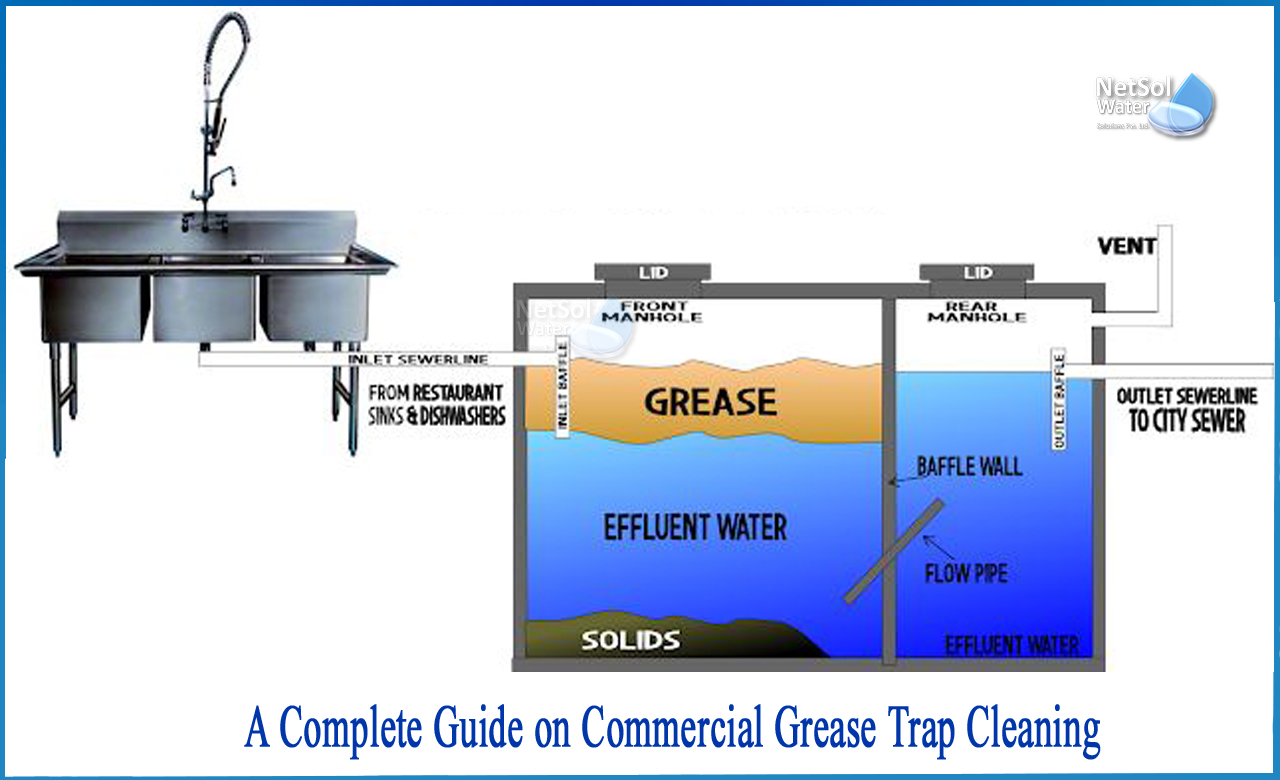Overview
Commercial grease traps are valuable assets in restaurants, hospitals, and schools. They can keep your business running smoothly if properly maintained. Poorly maintained or clogged grease traps, on the other hand, prove to be problematic and costly for many food establishments when they are not cleaned on a regular basis.
A grease trap accumulates Fats, Oils, and Greases (FOGs) in its tank, which decomposes over time and emits a rotting odor. If this is not addressed, the odor may become bothersome and have a negative impact on the number of customers who visit the restaurant, eventually jeopardizing the company's reputation.
Cleaning and maintaining grease traps and associated equipment on a regular basis keeps a kitchen a healthy and safe place to cook. The removal of FOG formation also aids in the prevention of sewer overflows, thereby preserving local water bodies. Keeping grease traps in good working order is critical to assisting restaurants in avoiding health, hygiene, and environmental consequences.
To comprehend the significance of grease trap cleaning, it is necessary to first comprehend the fundamentals of the grease trap.
What is a Commercial Grease Trap?
A grease trap is a plumbing system that collects FOG before it enters the wastewater. They are intended to capture fats, oils, and grease, or FOG, before the waste enters the public sewer system or the septic tank.
Grease traps are classified into two types: interior and exterior traps.
Interior traps, which are located near the kitchen sink, hold less FOG. Exterior traps are located outside the building and are larger, holding thousands of gallons of water. They are used in the sanitary systems of the majority of restaurants and food service businesses.
Grease traps are required in many cities because they play an important role in preventing costly sewer problems. Grease traps come in a variety of sizes, which are primarily determined by the amount of waste generated by your business. They are usually found on the inside or outside of a building. Typically, the wastewater flows through the sewage, and the fat solids sink to the tank's bottom. The commercial grease trap's air-intake valves help to prevent back pressure, which keeps the baffles in place.
What is the purpose of a grease trap?
A grease trap is simply a grease entrapment. When residual FOGS are emptied into the commercial kitchen sink, the grease trap allows the water to settle and drain into the city's water supply. The floating grease remains on top, where it can be reached and removed.
The importance of cleaning a commercial grease trap
In commercial kitchens, where much time is spent maintaining ovens, fryers, sinks, and other types of equipment, commercial grease traps are equally important.If FOG gets into the drain, it can solidify and cause a clog. Overflows occur as a result, as do plumbing and fixture damage. The system will not operate optimally and may even back up, if the grease trap is not cleaned properly. This can result in foul odors and is unsanitary.
FOG waste can accumulate in drainage systems and sewers if wastewater is not properly filtered. This can be costly both financially and in terms of time to repair. If a drain becomes clogged with grease, the blockage may need to be manually treated at the source.
The frequency of cleaning varies according to the size of the trap and the amount of grease used in commercial kitchens. Typically, restaurants must clean the commercial grease trap on a regular basis in order to maintain less than 25% FOG accumulation. This necessitates cleaning at least once a quarter and, in some cases, once a month.
What are the best practices for keeping grease traps in good condition?
Grease traps, like any other functional device, should be inspected on a regular basis for wear and tear or damage. Use sink drain covers to keep food particles out of the drain. Grease should not be poured into the sink because it will solidify and cause blockages as it travels down the drain. Employees in the kitchen should be educated on the best practices for dealing with food waste and cooking grease.
The impact of cleaning chemicals
Grease buildup can be removed with acidic chemicals. The majority of grease cleaners contain hazardous, toxic chemicals that harm the environment. Furthermore, these chemicals do not ensure complete FOG removal from drainage pipes. They typically wash down the drain and become part of the wastewater system, making treatment difficult.
Conclusion
The environment suffers as a result of a large amount of grease pollution and toxic chemical residues entering the water body. Microbes with enzymes like lipase can clean the grease trap to remove harmful chemicals. Lipase is abundant in yeasts, which are heterotrophic microorganisms that use organic compounds for energy and carbon. These microorganisms are an excellent long-term source for cleaning the commercial grease trap without harming the environment.
The microbes that produce lipase gradually remove the grease buildup. The drain lines will be coated with beneficial bacteria, which will aid in the reduction of grease and other organic matter that clogs the drains. Netsol water solutions wishes to contribute in this sustainability step in every way possible.
Netsol Water is Greater Noida-based leading water & wastewater treatment plant manufacturer. We are industry's most demanding company based on client review and work quality. We are known as best commercial RO plant manufacturers, industrial RO plant manufacturer, sewage treatment plant manufacturer, Water Softener Plant Manufacturers and effluent treatment plant manufacturers. Apart from this 24x7 customer support is our USP. Call on +91-9650608473, or write us at enquiry@netsolwater.com for any support, inquiry or product-purchase related query.



